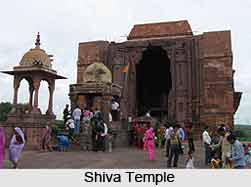 The small town of Bhojpur still basks in the quaint glory of rich history, which is reverberated by the many historical temples, and monuments that dot this land. Situated at a distance of 28 km from the city of Bhopal, this is one of the lesser-known enchantments of Madhya Pradesh. Bhojpur was founded by Raja Bhoj of Dhar in the 11th century. It was after him that the city was named Bhojpur. The town is well-known for its Lord Shiva Temple named Bhojeshwar Temple. In the eastern part of India, the temple is known as Somnath.
The small town of Bhojpur still basks in the quaint glory of rich history, which is reverberated by the many historical temples, and monuments that dot this land. Situated at a distance of 28 km from the city of Bhopal, this is one of the lesser-known enchantments of Madhya Pradesh. Bhojpur was founded by Raja Bhoj of Dhar in the 11th century. It was after him that the city was named Bhojpur. The town is well-known for its Lord Shiva Temple named Bhojeshwar Temple. In the eastern part of India, the temple is known as Somnath.
The Bhojeshwar temple was built sometime around 11th century. Bhojeshwar Temple is chiefly dedicated to Lord Shiva, housing the largest `shiva lingam` in India, measuring 2.3m (7.5 ft.) in height and 5.5m (18 ft.) in circumference and is crafted out of a single rock. In plan a simple square, with an exterior dimension of 66 feet, it is devoid of the re-entrant angles, usual in such buildings. The ornately carved dome, though incomplete, has a magnificient, towering strength of line, supported by four pillars. These, like the dome has been conceived on a colossal scale, yet maintain an astonishing elegance because of the tapering form. Divided in three sections, the lowest is an octagon with facets of 2.12 feet, from which springs a 24-faced section. The richly carved doorway is plain below, throwing into sharp relief the two exquisitely sculpted figurines that stand on either side. On the other three sides of the structure are balconies, each supported by mammoth brackets and four elaborately carved pillars. The lingam in the sanctum rises to an awe-inspiring height, set up on a massive platform of 21.5 feet square, and composed of three superimposed limestone blocks, the architectural harmony of the lingam and platform creating a superb amalgamation of solidity and lightness.
The Bhojeshwar temple, however, was left incomplete, and the earthen incline used to raise it to dome level still stands. Had it been completed, it would have had very few matches. As it is, even with the ravages of time Bhojeshwar temple remains one of the best examples of temple architecture of the 12th and 13th centuries.











